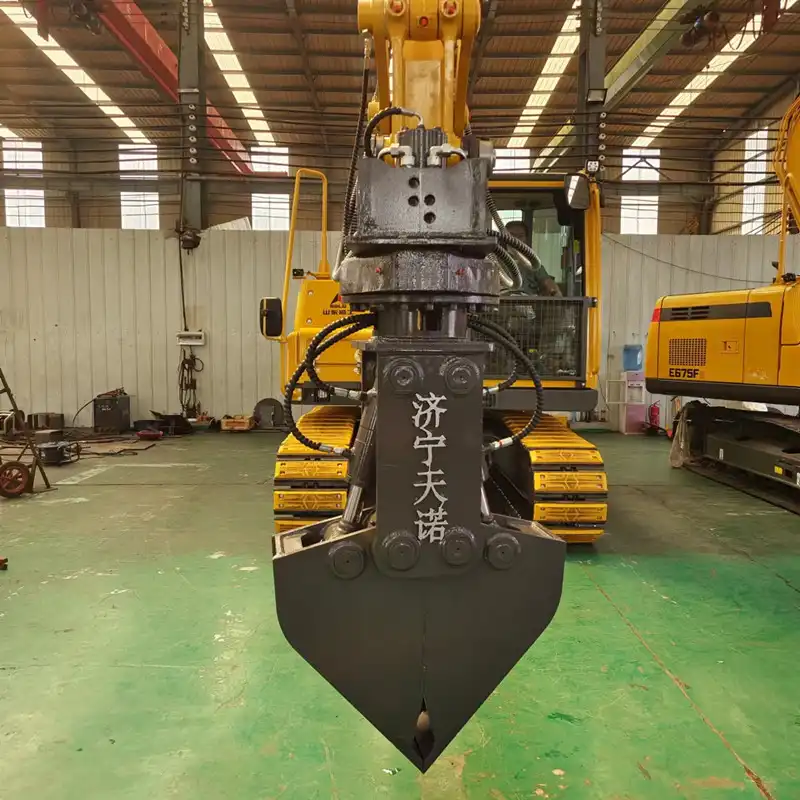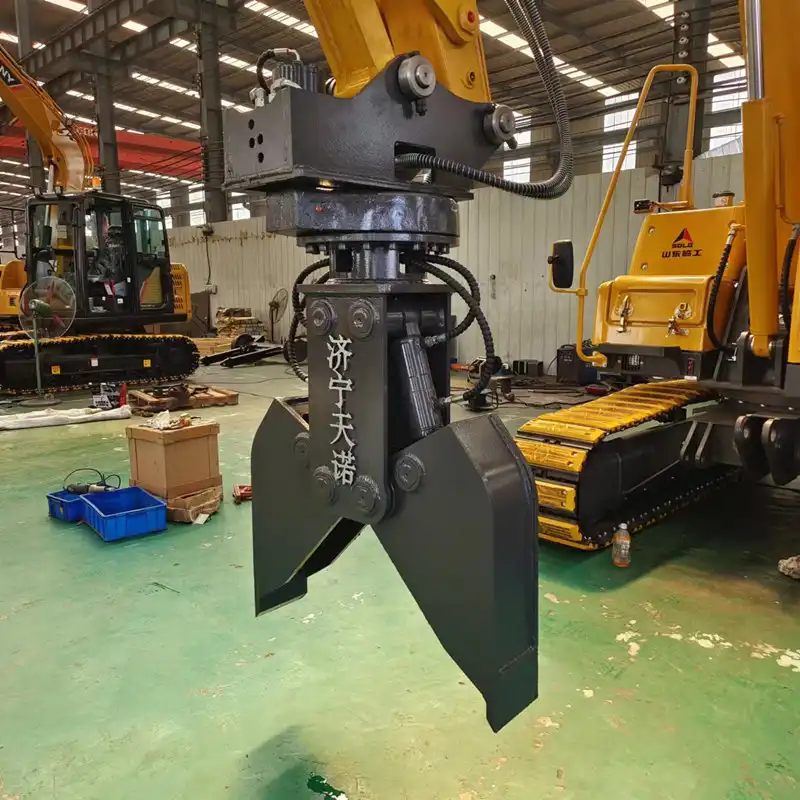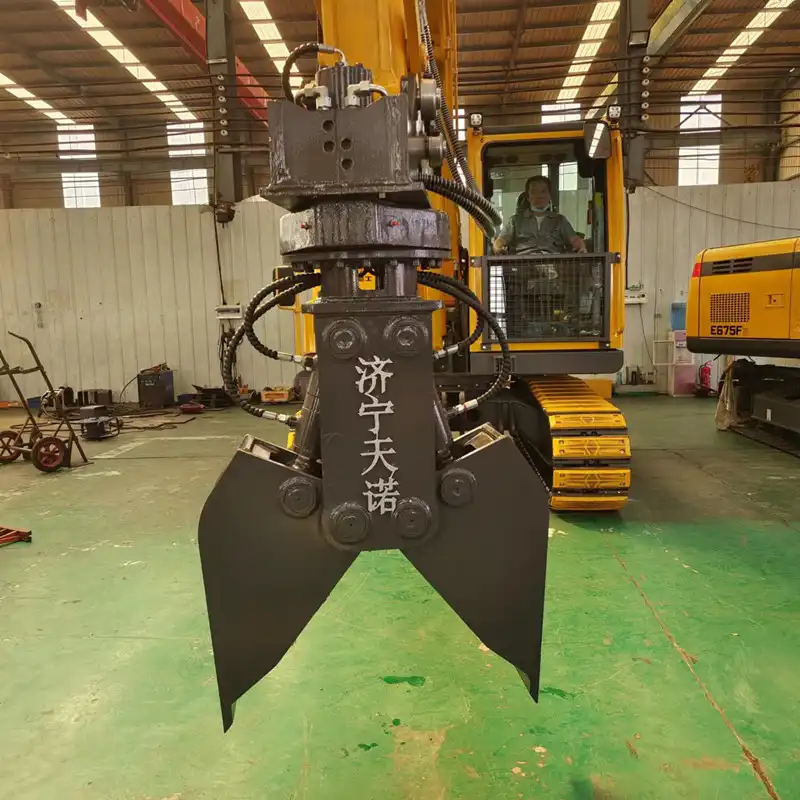What is the service life of the excavator rail clamp?
When investing in railway maintenance equipment, understanding the excavator rail clamp service life becomes crucial for budget planning and operational efficiency. Based on industry standards and real-world applications, a high-quality rail clamp typically delivers 5-8 years of reliable service under normal operating conditions. However, this lifespan can vary significantly depending on usage patterns, maintenance practices, and environmental factors. Premium clamps manufactured with high-strength alloy steel and proper surface treatments can even exceed this range, providing exceptional value for railway construction companies, mining operations, and infrastructure maintenance teams. The actual durability depends on several interconnected factors that we'll explore throughout this comprehensive guide, helping you make informed decisions about your railway equipment investments.

Frequency and Intensity of Use
The operational demands placed on your rail clamp directly influence its longevity. Heavy-duty applications in mining environments or continuous railway construction projects naturally accelerate wear patterns compared to occasional maintenance tasks.
Daily Operating Hours
Clamps used in round-the-clock operations experience significantly different stress levels than those employed during standard work shifts. Continuous operation generates more heat cycles, placing additional strain on hydraulic seals and mechanical components. Railway maintenance crews working intensive schedules often report noticeable wear after 3-4 years, while contractors using equipment sporadically might see the same clamp performing well beyond the 6-year mark.
The clamping force requirements also play a vital role. Operations demanding maximum 30 kN clamping force repeatedly will naturally experience faster component fatigue than those using moderate pressure settings. Smart operators adjust pressure based on specific task requirements, extending overall equipment life.
Environmental Conditions
Harsh weather conditions accelerate deterioration processes. Coastal operations expose clamps to salt air corrosion, while desert environments introduce abrasive sand particles that wear moving parts. Winter operations in freezing temperatures stress hydraulic components differently than summer heat cycles.
Proper environmental protection becomes essential. Regular cleaning removes corrosive substances, while adequate lubrication prevents moisture infiltration. Many successful contractors implement seasonal maintenance schedules addressing specific environmental challenges their equipment faces.
Load Variations
Consistent load patterns generally promote longer service life than erratic stress cycles. Railway track maintenance involving uniform rail weights creates predictable wear patterns, allowing for scheduled replacements. Conversely, demolition work with varying load requirements introduces unpredictable stress concentrations that can shorten component life unexpectedly.
Understanding your typical load profile helps predict maintenance needs accurately. Operators handling primarily standard gauge rails experience different wear patterns than those working with custom configurations requiring frequent adjustment cycles.

Quality of the Clamp Itself
Manufacturing quality determines the foundation upon which service life builds. Superior materials, precision engineering, and robust construction methods directly translate into extended operational periods and reduced maintenance costs.
Material Composition and Treatment
High-strength alloy steel excavator rail clamp provides exceptional durability compared to standard carbon steel alternatives. The metallurgical properties of quality alloys resist fatigue cracking and deformation under repeated stress cycles. Heat treatment processes further enhance material properties, creating hardened surfaces that withstand abrasive wear while maintaining core toughness.
Anti-rust coating systems protect against corrosion, particularly important for equipment exposed to moisture and chemical contaminants. Quality manufacturers apply multiple coating layers, including primer, intermediate, and topcoat systems that provide comprehensive protection. These treatments can double or triple the effective service life in challenging environments.
Hydraulic System Integration
Sophisticated hydraulic integration enhances both performance and longevity. Pressure hold valves maintain clamping force without continuous pump operation, reducing hydraulic component wear. Locking pin mechanisms provide mechanical backup, preventing hydraulic failure from compromising safety.
Operating pressure specifications between 16-21 MPa represent optimal balance between clamping effectiveness and component longevity. Systems operating at maximum pressure continuously experience accelerated seal wear, while under-pressurized systems may allow slippage that damages rail interfaces.
Design Engineering Excellence
Thoughtful engineering addresses stress concentration points that typically cause premature failures. Radius transitions, reinforcement ribs, and optimized geometry distribute loads evenly throughout the structure. Quality manufacturers conduct finite element analysis during design phases, identifying potential weak points before production begins.
Serviceability features like accessible lubrication points and replaceable wear components significantly extend effective service life. Equipment designed for field maintenance allows operators to address minor issues before they escalate into major problems requiring complete replacement.

General Service Life Range
Industry experience reveals distinct service life patterns across different operational categories, helping operators establish realistic expectations and maintenance budgets.
Light Duty Applications
Occasional railway maintenance and inspection work typically yields the longest service periods. Clamps used monthly or less frequently often exceed 8-10 years with minimal maintenance requirements. These applications avoid the cumulative stress effects of continuous operation while allowing adequate cooling and recovery periods between uses.
Infrastructure inspection teams and small-scale maintenance contractors frequently report exceptional longevity from quality excavator rail clamps. The combination of infrequent use and careful handling creates ideal conditions for extended service life, making initial investment costs highly favorable when calculated over the equipment's operational period.
Medium Duty Operations
Regular railway construction and maintenance activities represent the industry standard for service life calculations. Weekly or bi-weekly usage patterns typically deliver 5-7 years of reliable performance when proper maintenance practices are followed. This category encompasses most commercial railway operations and represents the baseline for manufacturer warranty periods.
Seasonal construction projects fall into this category, where equipment experiences intensive periods followed by storage intervals. Proper storage procedures during off-seasons significantly impact overall longevity, with covered storage and periodic exercise cycles preventing deterioration during idle periods.
Heavy Duty Industrial Use
Mining operations, large-scale construction projects, and continuous railway infrastructure development represent the most demanding applications. These environments typically see 3-5 years of service life, even from premium equipment. The trade-off between productivity and equipment longevity becomes a critical business consideration.
Successful heavy-duty operators often implement aggressive preventive maintenance schedules and maintain spare equipment inventories to minimize downtime. The total cost of ownership calculations must include replacement cycles and maintenance expenses to accurately assess long-term profitability.
FAQ
①How can I extend my rail clamp's service life?
Regular lubrication, proper storage, and avoiding overloading significantly extend equipment life. Clean the clamp after each use and inspect hydraulic connections monthly.
②What are the warning signs of clamp wear?
Reduced clamping force, hydraulic leaks, and unusual noises during operation indicate potential issues. Address these symptoms promptly to prevent complete failure.
③Should I repair or replace worn clamps?
Minor hydraulic seal replacement is cost-effective, but structural damage or excessive wear typically justifies replacement with newer, more efficient models.
④Do different rail gauges affect clamp longevity?
Standard 1435mm gauge operations generally experience consistent wear patterns, while custom configurations may require more frequent adjustments that can accelerate component wear.
⑤How does warranty coverage relate to actual service life?
Manufacturer warranties typically cover 1-2 years, but actual service life extends far beyond warranty periods when proper maintenance practices are followed.
Understanding excavator rail clamp service life helps railway professionals make informed equipment decisions. Quality construction, appropriate usage patterns, and proactive maintenance create the foundation for exceptional equipment longevity. Whether you're managing light-duty inspection work or heavy industrial construction, choosing the right clamp and maintaining it properly delivers outstanding return on investment. Tiannuo Machinery's commitment to superior materials and engineering excellence ensures your equipment investment provides years of reliable service across diverse railway applications.
Tiannuo's excavator rail clamp features high-strength alloy steel construction with customizable hydraulic or manual operation. Our clamps deliver up to 30 kN clamping force with 1435mm standard gauge compatibility and can be customized for specific requirements. The integrated hydraulic system operates at 16-21 MPa with safety features including locking pins and pressure hold valves. Anti-rust coating and heat treatment provide exceptional durability, while OEM support ensures perfect integration with your equipment. Ready to enhance your railway operations with reliable, long-lasting rail clamps? Contact our team at boom@stnd-machinery.com to discuss your specific requirements and discover how Tiannuo's proven expertise can optimize your railway maintenance efficiency.
References
- Railway Engineering Handbook: Equipment Maintenance and Lifecycle Management, 4th Edition, International Railway Association, 2023
- Heavy Equipment Durability Studies: Hydraulic Attachment Performance Analysis, Construction Machinery Research Institute, 2024
- Corrosion Protection in Railway Applications: Material Selection and Treatment Methods, Materials Engineering Quarterly, Vol. 15, 2023
- Preventive Maintenance Strategies for Railway Construction Equipment, Infrastructure Management Journal, Issue 3, 2024
- Cost-Benefit Analysis of Railway Maintenance Equipment Replacement Cycles, Transportation Economics Review, 2023
About Author: Arm
Arm is a leading expert in the field of specialized construction and railway maintenance equipment, working at Tiannuo Company. Tiannuo specializes in manufacturing a wide range of products, including railway maintenance equipment like railway sleeper changing machines and screening machines, excavator modification equipment such as excavator lifting cabs, various engineering arms for excavators, excavator accessories like digging buckets, and engineering vehicle auxiliary equipment like loader buckets.

